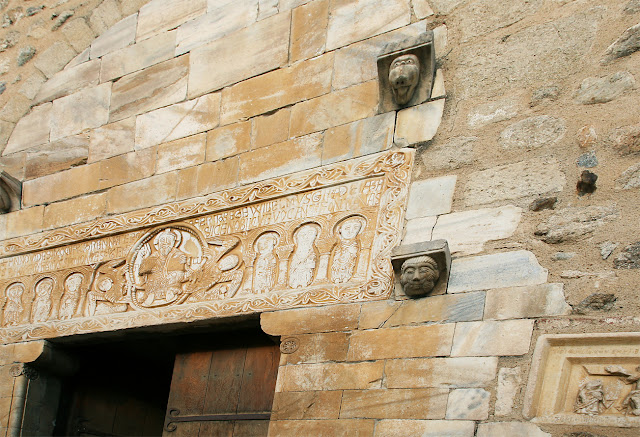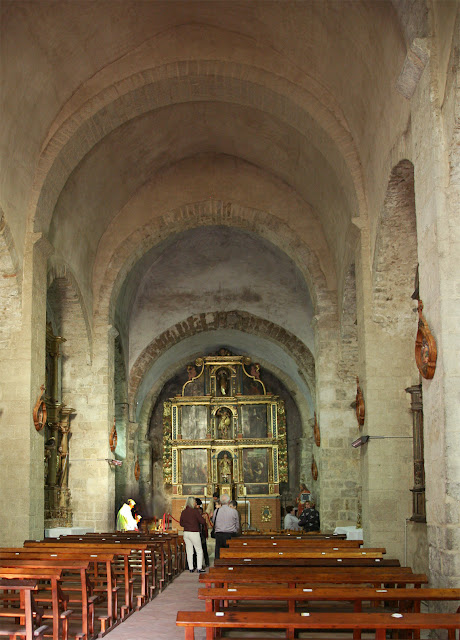なお修道院教会は19世紀半ばころ地区教会になり、名称もサン・ミッシェル教会に変更されたが、ロマネスク教会としは、旧称のサン・ジェニ・デ・フォンテーヌ修道院を称している。Google MapではSaint Michelと表示されるので、念のため付記しておきます。
Google Map(Cloitre Eglise Saint Michel = Saint-Génis-des-Fontaines Abbey)
1980年代に回廊の復元工事が実現した。
柱頭彫刻は、亀などの動物や草木など、身近な主題を取り上げた点で新しい試みは認められるが、後期ロマネスクの作品にしては完成度が低く、修道士の手になるも
のではないか、などの見方もある。
Abbey of Saint-Génis-des-Fontaines
The Abbey of Saint Genis des Fontaines was founded in 8th century and is located about 10 km east of the Saint Martin de Fenollar church which was mentioned in the previous article.
The famous relief of Majestic Christ carved on the lintel is the masterpiece of early Romanesque sculpture. It was made around 1020 judging from the Latin inscription above the relief.
The stone is white marble, but it looks a little brownish due apparently to the varnish coating.
The abbey became a parish church in the mid 19th century, and its name was changed to the Church of Saint-Michel(as shown on the Google Map above). However we continue using the old name of Abbey of Saint-Génis-des-Fontaine as a Romanesque church.
The cloister was completed in the second half of the thirteenth century in a late Romanesque style. It was a unique cloister with marble columns of different colors from various quarries.
Saint-Génis has survived a long history, sometimes with difficulty. In 16th century it was merged with Monastery of Montserrat near Barcelona for survival. The serious problem happened after the French Revolution when the monks were expelled and the property fell into the hands of several auctioneers, thus the monastery was lost.
In the 1920s the cloister was sold off in pieces by art dealers, and unfortunately, the pillars and capitals were scattered. However, about half a century later, the momentum to rebuild the monastery of Saint Genis came to fruition, and in the 1980s the cloister was reconstructed using recovered material.


















